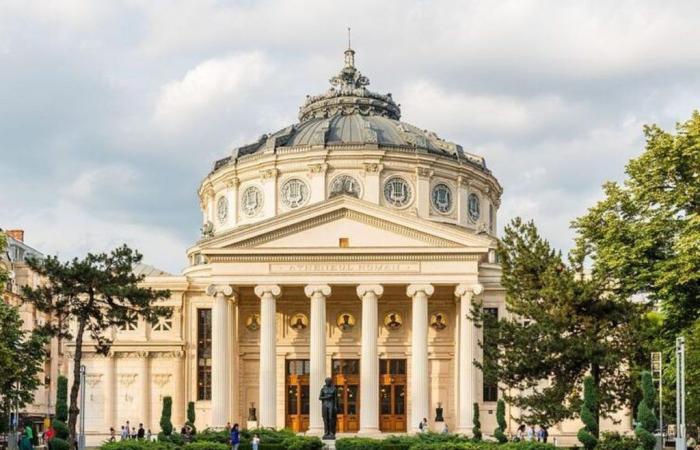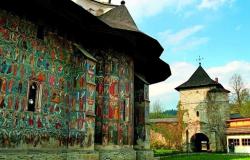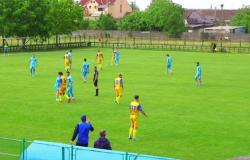The George Enescu Philharmonic (FGE), the most important philharmonic in the country, and the Romanian Athenaeum, built as a temple of national culture, entered into a strategic process of transformation and development, aimed at restoring their international brilliance and turning them into the cultural heart of Bucharestwhich connects Romania to music, artists, ideas and universal values.
The initiative was presented on Thursday, April 25, 2024, during a meeting with friends of the Philharmonic – music lovers, representatives of the business environment, people of culture and journalists, with the launch of the invitation to the business community and music lovers, ideas and culture to support this approach. Ambitious and complex, the project will be built gradually, on four key pillars:
- Increasing the artistic performance of the George Enescu Philharmonicso as to offer its viewers the experience of a season of international value all year round and to become recognized abroad for the quality of its artists and sound.
- The transformation of the Romanian Athenaeum into a living cultural centerby modernizing the technical infrastructure, which ensures a quality musical experience, at the level of the standards of the 21st century, and diversifying the cultural activities it offers (e.g. setting up and opening a museum; organizing exhibitions and debates, which put the Romanian public in connection with socially and culturally relevant themes and ideas, as well as internationally recognized personalities).
- Strengthening the educational component and the community around the two institutions – including here the attraction of a young and new public to music, arts, culture and universal values - to cultivate in society an identity and a self-representation of Romanians as citizens of the world, defined by the fundamental values of humanity.
- Building a new brand identity for the Philharmonic and for the Athenaeum, supported by a communication strategy to reposition the two institutions, both in Romania and internationally. The Philharmonic is moving to a new visual identity in stages, from May 2024.
The George Enescu Philharmonic: a construction process started in 2022
“The George Enescu Philharmonic has the potential to play in the big league of international classical music. We work to attract the best Romanian artists, to open up more and more to foreign artists, to refine and customize our sound until we reach the warm purity of amber and be recognized for it. The process of improving the artistic performance and quality of the season has already begun.
We have attracted young, internationally recognized artists to the orchestra. Our season has improved significantly since 2023, by bringing internationally recognized names to Bucharest. We have created new programs, such as the educational program “Music for everyone”, the promotion program for young composers and female composers in Romania.
We will continue in these directions with even more energy. Season 2024-2025 will be the most attractive and brilliant in recent decades, given the international headliners who will perform together with the George Enescu Philharmonic on the stage of the Athenaeum, such as conductor Vasily Petrenko, violinists Renaud Capuçon, Vadim Repin and Daniel Hope, opera bass Roberto Scandiuzzi . But the development of the Philharmonic and the Athenaeum will only be possible if the community also comes alongside us and supports us in the long term, just as the community was the one that, in the 19th century, made possible both the establishment of the Philharmonic and the construction of the Athenaeum”, said Marin Cazacu, general director of the George Enescu Philharmonic.
The full schedule for the 2024-2025 season will be announced in August 2024, when season tickets go on sale.
Some of the most acclaimed French musicians will be among the guests FGE: legendary conductor Charles Dutoitwhose career of over 50 years has taken him to all the great stages of the world, the popular violinist Renaud Capuçonas soloist and conductoras well as conductor Yan Pascal Tortelier, who will play a grandiose romantic score – Requiem by Giuseppe Verdi, with one of the most acclaimed opera basses in the world, Roberto Scandiuzzi, in distribution. Brit Daniel Hope and the Russian Vadim Repin completes the list of illustrious violinists who will appear for the first time in the FGE season, with the less well-known Benjamin Britten Concerto, respectively with a classical page from the 20th century repertoire – Concert no. 1 by Dmitri Shostakovich.
Some of the musical works presented next season will be real events: the operas in concert The Spanish Hour by Maurice Ravel (conducted by Maxim Pascal) and Elektra by Richard Strauss (premièred at the Athenaeum), under his baton Christian Badea, the monumental Symphony no. 2 by Gustav Mahler with Vasily Petrenko (music director of the Royal Philharmonic in London), Symphony no. 3, “Kaddish” by Leonard Bernstein (at the lectern, Alexandre Bloch, Music Director of the National Orchestra of Lille) but also Johann Sebastian Bach’s Matthaeus-Passion, considered the most impressive oratorio ever composed, conducted by Gabriel the Baby.
Among the big names attracted in the 2023-2024 Season, we mention the conductors Leonard Slatkin (6 Grammy Awards), Laurence Foster, Justus Franz, Jean-Claude Casadesus, in addition to an important number of foreign soloists.
The Romanian Athenaeum: the first steps and a vision of transformation, with the help of the community of friends
The Romanian Athenaeum is also the subject of an independent cultural development project, for a better utilization of the resources that this monument of built heritage offers to society, in addition to the fact that it is the home of the George Enescu Philharmonic. Within the Athenaeum, a museum will be set up and exhibitions will be organized. A number of equipment and infrastructure elements need to be modernized, respecting the status of the heritage building, such as the lighting and sound installation, the installation of a video transmission system, the modernization of ventilation, etc. The objective is for the Athenaeum to offer a diverse and quality cultural experience, at international standards, both for the Romanian public and for foreign tourists eager for cultural tourism and for artists.
The first steps were taken with the resources that the Philharmonic has from the public budget, as well as with the support of some early sponsors who joined the initiative from the idea phase, but there is a need for greater involvement of the business environment, within a communities of friends of the Athenaeum and the George Enescu Philharmonic, so that this transformation process is quick and comprehensive.
The Athenaeum received in April the title of European Heritage Label, awarded by the European Commission, following a project competition. It is a recognition of the European value that the Athenaeum has and of its contribution to the European identity. Only one other building in Romania still has this title – the European Commission of the Danube in Sulina – and only 67 sites in the EU.
The Romanian Athenaeum was built during the period of consolidation of the modern state, at the initiative of the Romanian Athenaeum Society, a scientific, literary and artistic entity, led by the naturalist Constantin Esarcu, which included numerous scientists and cultural figures (including Alexandru Odobescu, VA Urechia and Nicolae Kretzulescu). Its mission was “the propagation of instruction and education among the people” through public conferences and courses, publications, exhibitions and other cultural events.
The building was erected in two stages, between 1886 and 1897, according to the plans of the French Albert Galeron, recommended by Charles Garnier, the architect of the Paris Opera, and the completion of the works was possible with the financial contribution of generous donors and the entire community, through the famous “Give a leu for the Athenaeum” campaign.
The Athenaeum became, from 1889 when the concert hall was completed, the headquarters of the Bucharest Professional Symphony Orchestra, founded in 1868 under the title of the Romanian Philharmonic Society. Since 1907, important names of classical music from around the world have performed as conductors or soloists on the stage of the Athenaeum, including Pietro Mascagni, George Enescu, Richard Strauss, Maurice Ravel, Igor Stravinsky, Bela Batok, Herbert von Karajan, or Carl Böhm . The splendid hall currently hosts the George Enescu International Festival and Competition, the most important international cultural event organized by Romania.
A new identity and a new relationship with the community
“The George Enescu Philharmonic and the Romanian Athenaeum are part of our modern and contemporary history. They went through the same challenges as our society and they have the same need for Romania to reinvent itself to be relevant in the 21st century.
This is what we have begun to do through the strategic transformation project we are working on and invite the community to join us. In the end, the history we want, we make it together, through involvement. The George Enescu Philharmonic gives life to music of universal value, through an interpretation that unites artists and spectators in experiencing a state of grace, because it has musicians with a vocation and the best ensembles in Romania.
The Romanian Athenaeum is a symbolic building, which can come to life through investments and the diversification of quality events, so that it becomes a true cultural heart of Bucharest, which connects Romania to music, ideas, artists and universal values”, said Oana Marinescu, consultant strategic communication and Managing Director of OMA Vision, the team that ensures the strategic conception and implementation of the transformation project.
“We liked the strategic transformation project of the George Enescu Philharmonic and the Athenaeum from the idea phase, because it is brave, makes very good use of the resources of the two institutions, has a vision and, above all, makes a significant contribution to society. I saw it as a form of entrepreneurship with a vision at the level of public institutions, through which they want to achieve a collaboration between the state and the private environment, for projects of common interest.
We are a bank, we support entrepreneurs and we like brave and grounded projects. We are also aware and mindful of our responsibility to the community. We believe that this initiative will make an essential contribution to the community”, said Virginia Otel, Communication Leader, Garanti BBVA, one of the main sponsors of the Philharmonic and the transformation project.
“Investments in culture are critical for the sustainable evolution of society, for the preservation and promotion of authentic values, intellectual development, constructive dialogue between generations and institutions. The partnership with the George Enescu Philharmonic is the way in which we, Rompetrol, continue to contribute to the cultural life of the community, and to bring classical music closer to people, with all its beauty, diversity and creative power”, said Costinela Drăgan, Sustainability Director & CSR, Rompetrol, one of the main sponsors of the transformation project.
“The founding, growth and continuity of these two institutions represent cultural and revolution (several founders derive from Pashoptists), and independence, and union. From 1886-1889, the building of the Athenaeum – conceived as modern secular temple – is the localization of European modernity in our country. The cardinal values of these two institutions and of of This cultures are mine any European cultures: the transversal society initiative; solidarity as valuing freedom, enthusiasm, modernity. The history we want, we make together. The music we want, we make together.
We create the culture we want together. Nothing Promethean, but also nothing fatalistic: if we really want to build, then we build. As in all modern institutions, the founders come out of the archaic: the craftsman Manole multiplies, fills society and survives. Modern: no need for another monastery and no other sacrifice: The Athenaeum has been in its place ever since and maintains its venerable function”. argued historian Eugen Ciurtin, director of the Institute of History of Religions.
Tags: George Enescu Philharmonic Romanian Athenaeum aim cultural heart Bucharest point connection Romania pulse music ideas universal values
-






